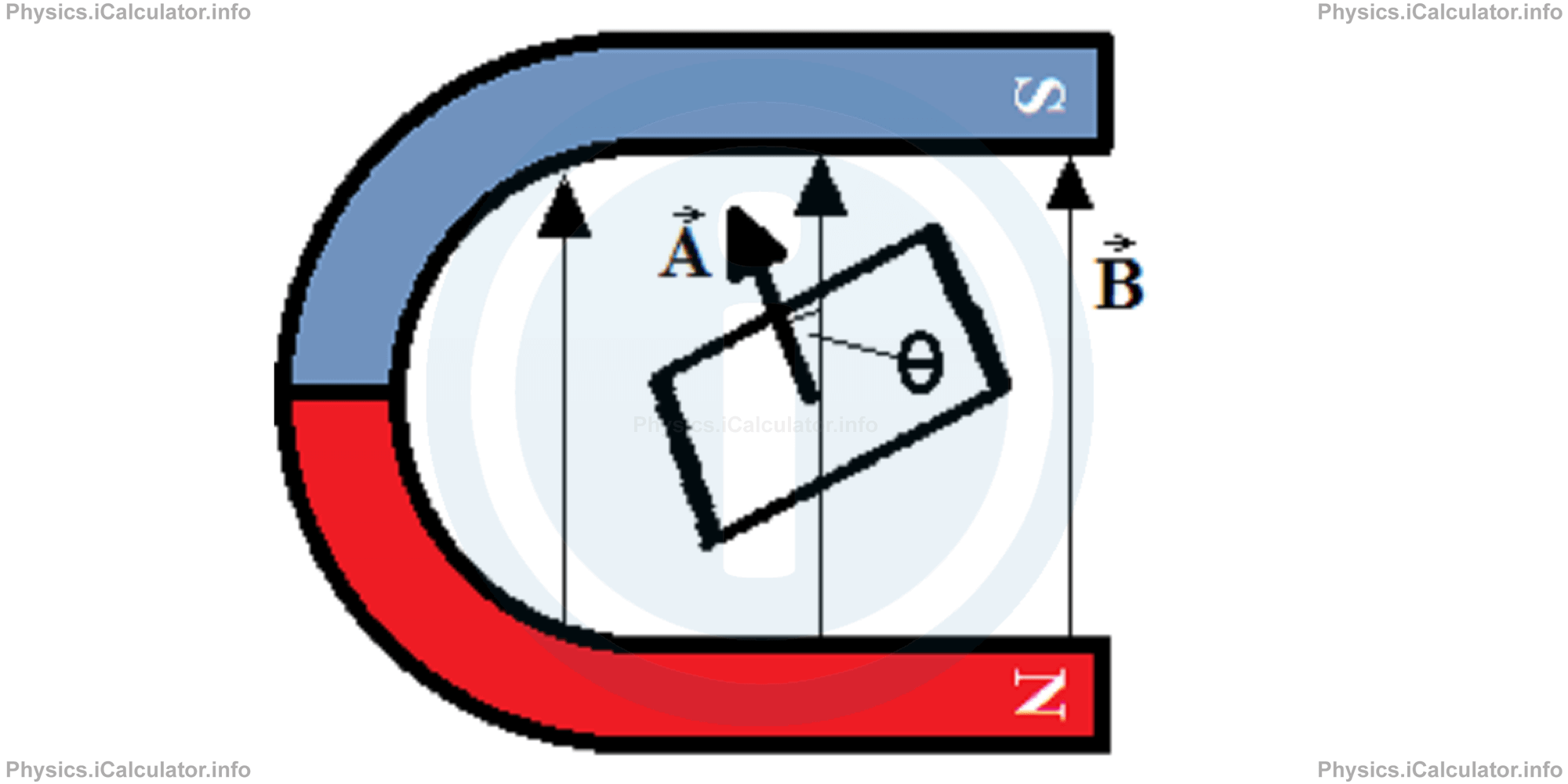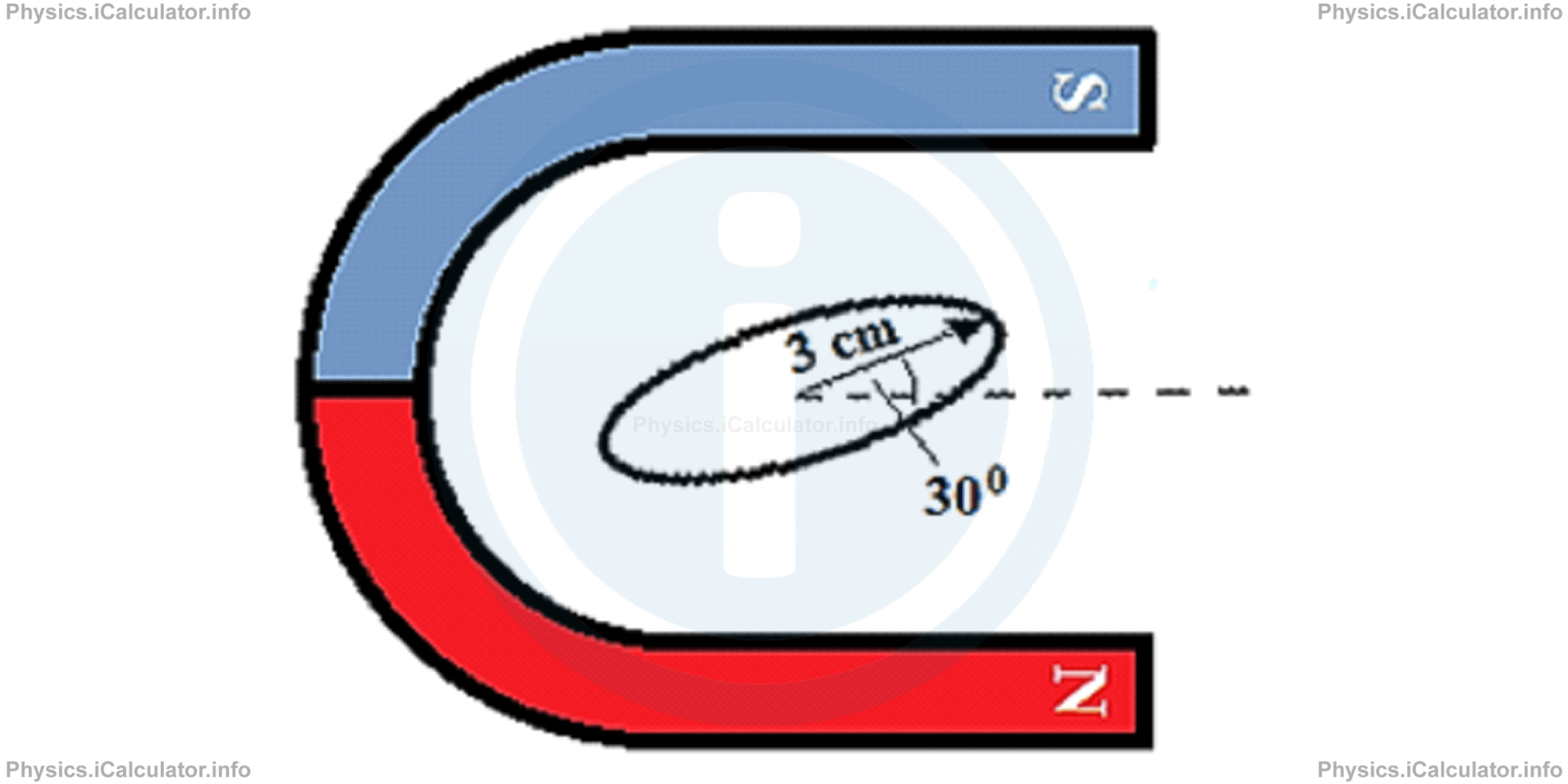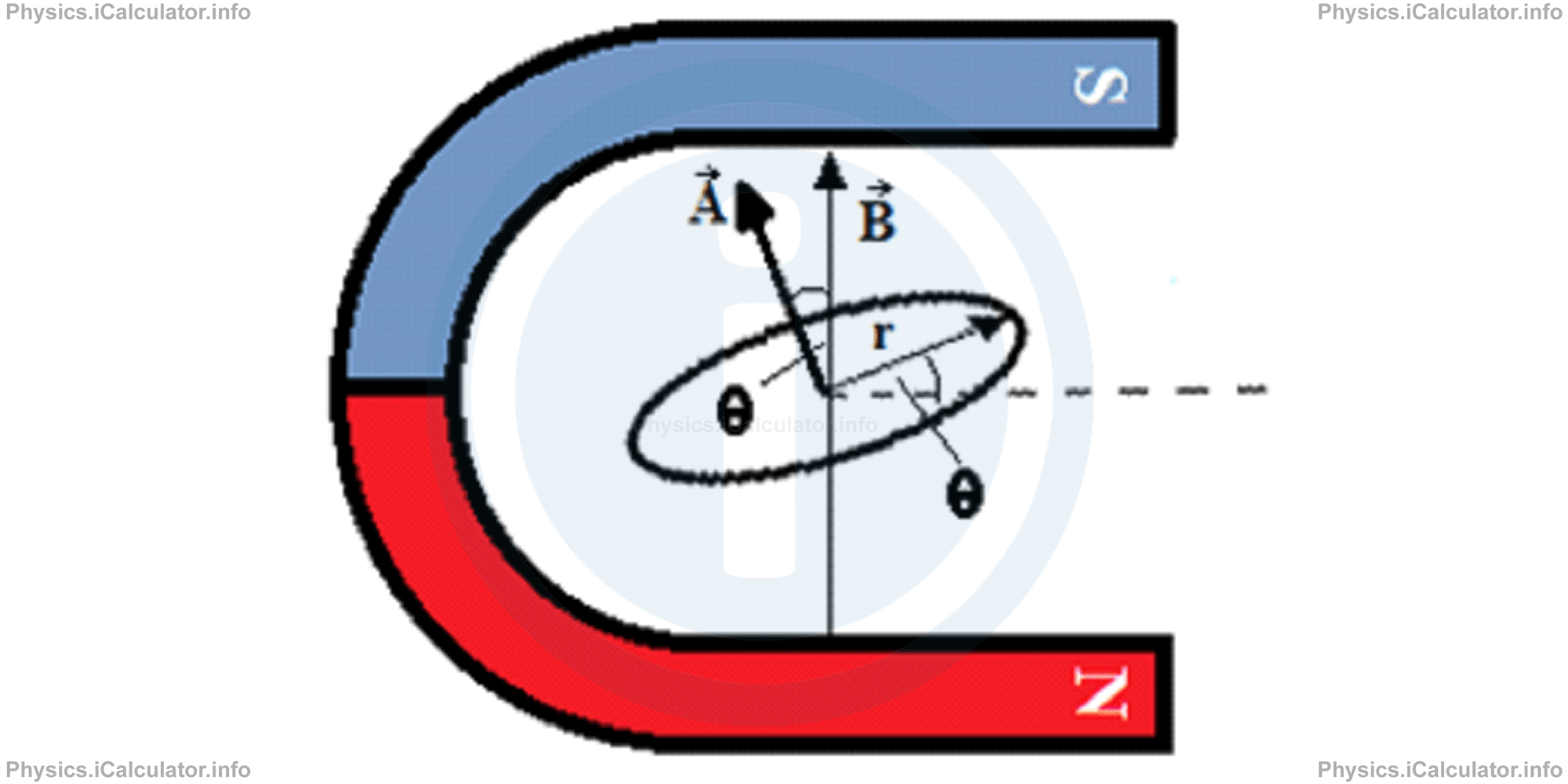Menu
Physics Lesson 16.7.2 - Faraday's Law of Induction
Please provide a rating, it takes seconds and helps us to keep this resource free for all to use
Welcome to our Physics lesson on Faraday's Law of Induction, this is the second lesson of our suite of physics lessons covering the topic of Faraday's Law of Induction, you can find links to the other lessons within this tutorial and access additional physics learning resources below this lesson.
Faraday's Law of Induction
Based on the above two experiments, Faraday realized that:
- An emf and current can be induced in the loop by changing the amount of magnetic field around the loop;
- The amount of magnetic field can be represented through the amount of magnetic field lines passing through the loop.
Combining the above statements, we obtain the Faraday's Law of Induction:
"An induced emf (and current) are induced in a loop only if the number of magnetic field lines passing through the loop is changing."
From this law, we can conclude that the number of actual field lines flowing through the loop is not important; the only thing that matters in this process is the rate of change in the number of magnetic field lines passing through the loop.
Now, let's calculate the amount of magnetic field lines passing through the loop. For this, we have to consider the magnetic flux ΦM, which is analogue to the electric flux ΦE we have discussed in the tutorial 14.6 "Electric Flux and the Gauss Law." The integral expression of the electric flux flowing through a loop is
where E⃗ is the vector of electric field and A⃗ the area vector of the loop.
Similarly, the magnetic flux ΦM flowing through a similar loop is
The result of this integral is the dot product of the magnetic field vector B⃗ and the area vector A⃗, which is perpendicular to the surface pierced by the magnetic field lines and is numerically equal to the area enclosed by the loop.

The magnetic field B⃗ between the poles produced by the bar magnet shown above is uniform, i.e. the magnetic field lines are parallel to each other (vertical in direction). The loop is deflected by an angle θ to the horizontal direction; this means the area vector A⃗ forms the same angle θ to the magnetic field lines. Therefore, the value of the integral if the magnetic field is uniform, is
and the magnitude of magnetic flux ΦM, is
In addition, if the loop is placed perpendicular to the direction of magnetic field lines, i.e. the area vector is parallel to the magnetic field lines, we obtain
= B ∙ A ∙ 1
= B ∙ A
The unit of magnetic flux (Tesla × square metre) is known as Webber, [Wb]. Thus,
The concept of magnetic flux helps us state the Faraday' Law of induction in a more comprehensive and practical way:
"The magnitude of the electromotive force induced in a loop is equal to the rate of change of the magnetic flux in this loop."
We have seen in tutorial 16.2 that the induced current in a coil containing N loops when we move a magnet towards to or away from it, is in the opposite direction to the moving magnet. The same thing is true for the induced emf produced in the coil as well. Thus, based on the Faraday's Law of Induction, we can say that the induced emf tends to oppose the flux change, i.e.
for not-so-small intervals of time and
for infinitely small intervals of time. Obviously, the last formula gives a more precise result for the emf induced in a loop or coil due to a magnetic field. Therefore, it is known as the mathematical expression of the Faraday's Law of induction.
Example 1
A circular loop of radius equal to 3 cm is placed between the poles of a horseshoe magnet at 300 to the horizontal direction, as shown in the figure.

What is the induced emf produced in the loop if we rotate the coil from the actual position to the horizontal position in 2 seconds? The magnetic field between the poles of magnet is 20 mT.
Solution 1
First, we must find the magnetic flux flowing through the loop in both positions. In the actual position, the angle between magnetic field lines (down-up) and the area vector (normal to the loop) is still 300 (from geometry it is known that two angles that have perpendicular sides to each other are equal).: 
We have the following clues:
r = 3 cm = 3 × 10-2 m
B = 20 mT = 2 × 10-2 T
θ1 = 30°
θ2 = 0°
Δt = 2 s
Thus, for the angle θ1 = 30°
= B ∙ π ∙ r2 ∙ cosθ1
= (2 × 10-2 T) ∙ (3.14) ∙ (3 × 10-2 m)2 ∙ cos300
= (2 × 10-2 T) ∙ (3.14) ∙ (3 × 10-2 m)2 ∙ (0.866)
= 4.89 × 10-5 Wb
When rotating the loop at θ2 = 0° we obtain
= B ∙ π ∙ r2 ∙ cosθ2
= (2 × 10-2 T) ∙ (3.14) ∙ (3 × 10-2 m)2 ∙ cos00
= (2 × 10-2 T) ∙ (3.14) ∙ (3 × 10-2 m)2 ∙ 1
= 5.65 × 10-5 Wb
Therefore, the induced electromotive force εi produced in the loop when rotating it inside the uniform magnetic field, is
= -(ΦM(2) -ΦM(1) )/Δt
= -(5.65 × 10-5 Wb-4.89 × 10-5 Wb)/2s
= -0.38 V
Hence, the induced emf during this process is 0.38V (the negative sign is because induced emf is in the opposite direction to the cause of its generation (moving direction of loop).
Note that here we have used the symbol Δ instead of d to represent the time interval as it is too large to consider as infinitely small.
If the coil has N-turns, we obtain for the induced emf:
The magnetic flux through a coil can be changed in four ways:
- By changing the value of magnetic field in the space containing the coil,
- By changing the area of coil,
- By changing the angle of coil to the magnetic field lines, and
- By changing the number of turns (loops) in the coil
You have reached the end of Physics lesson 16.7.2 Faraday's Law of Induction. There are 4 lessons in this physics tutorial covering Faraday's Law of Induction, you can access all the lessons from this tutorial below.
More Faraday's Law of Induction Lessons and Learning Resources
Whats next?
Enjoy the "Faraday's Law of Induction" physics lesson? People who liked the "Faraday's Law of Induction lesson found the following resources useful:
- Law Feedback. Helps other - Leave a rating for this law (see below)
- Magnetism Physics tutorial: Faraday's Law of Induction. Read the Faraday's Law of Induction physics tutorial and build your physics knowledge of Magnetism
- Magnetism Revision Notes: Faraday's Law of Induction. Print the notes so you can revise the key points covered in the physics tutorial for Faraday's Law of Induction
- Magnetism Practice Questions: Faraday's Law of Induction. Test and improve your knowledge of Faraday's Law of Induction with example questins and answers
- Check your calculations for Magnetism questions with our excellent Magnetism calculators which contain full equations and calculations clearly displayed line by line. See the Magnetism Calculators by iCalculator™ below.
- Continuing learning magnetism - read our next physics tutorial: Lentz Law
Help others Learning Physics just like you
Please provide a rating, it takes seconds and helps us to keep this resource free for all to use
We hope you found this Physics lesson "Faraday's Law of Induction" useful. If you did it would be great if you could spare the time to rate this physics lesson (simply click on the number of stars that match your assessment of this physics learning aide) and/or share on social media, this helps us identify popular tutorials and calculators and expand our free learning resources to support our users around the world have free access to expand their knowledge of physics and other disciplines.
Magnetism Calculators by iCalculator™
- Angular Frequency Of Oscillations In Rlc Circuit Calculator
- Calculating Magnetic Field Using The Amperes Law
- Capacitive Reactance Calculator
- Current In A Rl Circuit Calculator
- Displacement Current Calculator
- Electric Charge Stored In The Capacitor Of A Rlc Circuit In Damped Oscillations Calculator
- Electric Power In A Ac Circuit Calculator
- Energy Decay As A Function Of Time In Damped Oscillations Calculator
- Energy Density Of Magnetic Field Calculator
- Energy In A Lc Circuit Calculator
- Faradays Law Calculator
- Frequency Of Oscillations In A Lc Circuit Calculator
- Impedance Calculator
- Induced Emf As A Motional Emf Calculator
- Inductive Reactance Calculator
- Lorentz Force Calculator
- Magnetic Dipole Moment Calculator
- Magnetic Field At Centre Of A Current Carrying Loop Calculator
- Magnetic Field In Terms Of Electric Field Change Calculator
- Magnetic Field Inside A Long Stretched Current Carrying Wire Calculator
- Magnetic Field Inside A Solenoid Calculator
- Magnetic Field Inside A Toroid Calculator
- Magnetic Field Produced Around A Long Current Carrying Wire
- Magnetic Flux Calculator
- Magnetic Force Acting On A Moving Charge Inside A Uniform Magnetic Field Calculator
- Magnetic Force Between Two Parallel Current Carrying Wires Calculator
- Magnetic Potential Energy Stored In An Inductor Calculator
- Output Current In A Transformer Calculator
- Phase Constant In A Rlc Circuit Calculator
- Power Factor In A Rlc Circuit Calculator
- Power Induced On A Metal Bar Moving Inside A Magnetic Field Due To An Applied Force Calculator
- Radius Of Trajectory And Period Of A Charge Moving Inside A Uniform Magnetic Field Calculator
- Self Induced Emf Calculator
- Self Inductance Calculator
- Torque Produced By A Rectangular Coil Inside A Uniform Magnetic Field Calculator
- Work Done On A Magnetic Dipole Calculator